My News and Reviews
After a week full of random musings comes a week full of reviews. Well, that is if you consider two reviews “full.” Either way, there were two reviews posted at Experiments in Manga last week. First up was Lucy Birmingham and David McNeill’s Strong in the Rain: Surviving Japan’s Earthquake, Tsunami, and Fukushima Nuclear Disaster. Originally released in 2012 as a hardcover, it is now available as a trade paperback. The volume is very approachable and makes an excellent overview of many of the aspects of the March 2011 disaster. As promised, I also reviewed the first omnibus of Takashi Ikeda’s yuri manga series Whispered Words. So far, I’m really enjoying the series (it even has karate in it!), but One Peace Books’ edition is rather disappointing in regards to quality control. Check out the review’s comments for more specific details.
As for other interesting things online: Oishinbo has certainly made some political and social commentary in the past, but the manga recently managed to get suspended amidst nuclear furor. The latest ANNCast features the return of the super manga pals Deb Aoki and Rebecca Silverman. The Gay Manga tumblr has a great post about how language impacts the way that sexuality is thought and talked about, looking at the terms “bara” and “gei” among other things. (The discussion reminded me quite a bit about my random musings on translation and queer theory.) Another fantastic post (well, series of four posts) is Revealing and Concealing Identities: Cross-Dressing in Anime and Manga over at The Lobster Dance. So far, Part 1 and Part 2 have been posted.
Quick Takes
 Bunny Drop, Volume 10 by Yumi Unita. Oh, Bunny Drop. I love parts of the series while other aspects frankly piss me off. I personally don’t mind incest plotlines in my fiction (and technically there’s no incest in Bunny Drop), it’s just that it was handled so incredibly poorly. It’s been a while since a manga has gotten such a visceral reaction from me. But even though Bunny Drop left me seething, I was still looking forward to reading the tenth volume–a collection of short side stories as well as an extensive interview with Unita about the series and its anime adaptation. Most of the volume is devoted to when Rin and Kouki were small (including the story of how he got the scar on his forehead), which I enjoyed. I also rather liked the story that focused on Rin’s mother and the man who would become her husband. However, the final story takes place sometime after Rin and Daikichi are married–a development that I continue to be completely unconvinced by, a sentiment this final story does nothing to alleviate.
Bunny Drop, Volume 10 by Yumi Unita. Oh, Bunny Drop. I love parts of the series while other aspects frankly piss me off. I personally don’t mind incest plotlines in my fiction (and technically there’s no incest in Bunny Drop), it’s just that it was handled so incredibly poorly. It’s been a while since a manga has gotten such a visceral reaction from me. But even though Bunny Drop left me seething, I was still looking forward to reading the tenth volume–a collection of short side stories as well as an extensive interview with Unita about the series and its anime adaptation. Most of the volume is devoted to when Rin and Kouki were small (including the story of how he got the scar on his forehead), which I enjoyed. I also rather liked the story that focused on Rin’s mother and the man who would become her husband. However, the final story takes place sometime after Rin and Daikichi are married–a development that I continue to be completely unconvinced by, a sentiment this final story does nothing to alleviate.
 Carciphona, Volumes 1-4 by Shilin Huang. Another splurge purchase from TCAF, Carciphona is a self-published manga-style series of graphic novels which are also available to read online. It was Huang’s spectacular artwork that caught my eye. (Her artbook Toccata is simply gorgeous.) Though the interior art isn’t as stunning as the series’ covers, it is still excellent. Huang considers herself more of an illustrator than an comics artist; though it was fairly strong to begin with, her storytelling improves greatly from volume to volume. Occasionally Carciphona falls prey to infodumps in order to establish the setting, especially early on in the series, but the worldbuilding and characters are interesting. Carciphona is high fantasy with magic and religion, assassins and political intrigue, and tension between races. The story follows Veloce Visrin, a young, powerful sorceress living in a world where common magic–magic which relies on demonic spirits–has been prohibited. Her life has not been an easy or happy one, so she’s a bit surly (and understandably so), but she is also very loyal and protective of those who become her friends.
Carciphona, Volumes 1-4 by Shilin Huang. Another splurge purchase from TCAF, Carciphona is a self-published manga-style series of graphic novels which are also available to read online. It was Huang’s spectacular artwork that caught my eye. (Her artbook Toccata is simply gorgeous.) Though the interior art isn’t as stunning as the series’ covers, it is still excellent. Huang considers herself more of an illustrator than an comics artist; though it was fairly strong to begin with, her storytelling improves greatly from volume to volume. Occasionally Carciphona falls prey to infodumps in order to establish the setting, especially early on in the series, but the worldbuilding and characters are interesting. Carciphona is high fantasy with magic and religion, assassins and political intrigue, and tension between races. The story follows Veloce Visrin, a young, powerful sorceress living in a world where common magic–magic which relies on demonic spirits–has been prohibited. Her life has not been an easy or happy one, so she’s a bit surly (and understandably so), but she is also very loyal and protective of those who become her friends.
 Devils and Realist, Volume 1 written by Madoka Takadono and illustrated by Utako Yukihiro. William Twining comes from a prestigious family and has done everything he can to meet, and surpass, all expectations so as not to disgrace his family’s name. He’s brilliant and at the top of his class…and recently lost most of his wealth due to his uncle’s bankruptcy. Perhaps even more problematic is that he’s somehow also responsible for selecting the next ruler of hell, despite being scientifically minded and refusing to believe in the demons right in front of him who are trying to bribe him. The artwork in Devils and Realist is attractive, though the more action-oriented sequences, while pretty, can be somewhat difficult to follow. It was amusing to see many of the demons introduced become transfer students at William’s school, but personally I’d like to see the story focus less on school antics and more on the struggle for control of hell. Then again, I actually did enjoy the sillier aspects of the manga. Devils and Realist has some potential; I’ll probably be giving it at least one more volume to see which direction it takes.
Devils and Realist, Volume 1 written by Madoka Takadono and illustrated by Utako Yukihiro. William Twining comes from a prestigious family and has done everything he can to meet, and surpass, all expectations so as not to disgrace his family’s name. He’s brilliant and at the top of his class…and recently lost most of his wealth due to his uncle’s bankruptcy. Perhaps even more problematic is that he’s somehow also responsible for selecting the next ruler of hell, despite being scientifically minded and refusing to believe in the demons right in front of him who are trying to bribe him. The artwork in Devils and Realist is attractive, though the more action-oriented sequences, while pretty, can be somewhat difficult to follow. It was amusing to see many of the demons introduced become transfer students at William’s school, but personally I’d like to see the story focus less on school antics and more on the struggle for control of hell. Then again, I actually did enjoy the sillier aspects of the manga. Devils and Realist has some potential; I’ll probably be giving it at least one more volume to see which direction it takes.
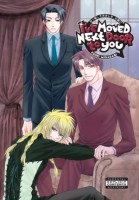 I’ve Moved Next Door to You by Fuhri Misasagi. There were two things that particularly appealed to me about I’ve Moved Next Door to You and which led me to pick up Misasagi’s boys’ love one-shot: the somewhat “reversible” nature of the characters and their polyamorous relationship. At least it’s described as being a polyamorous relationship–it’s really more of a pseudo-love triangle. Sadly, neither of those things could save this manga for me. With the aid of his secretary Kamoshida (who is in love with him), Takumi has recently moved into a rundown apartment after leaving his company. Up until now he’s led a very privileged and sheltered life and so has no idea how to live on his own. However, his new neighbor Renji is more than happy to help him out, which apparently also includes sexually harassing him any chance he gets. Even though the manga is supposed to be a comedy, tragic backstories are also added to the mess of unbelievable characters and plot. I’ve Moved Next Door to You isn’t sexy or romantic, and it’s not even very funny, though it does try very hard to be all of those things. I can’t say that I enjoyed the manga much at all.
I’ve Moved Next Door to You by Fuhri Misasagi. There were two things that particularly appealed to me about I’ve Moved Next Door to You and which led me to pick up Misasagi’s boys’ love one-shot: the somewhat “reversible” nature of the characters and their polyamorous relationship. At least it’s described as being a polyamorous relationship–it’s really more of a pseudo-love triangle. Sadly, neither of those things could save this manga for me. With the aid of his secretary Kamoshida (who is in love with him), Takumi has recently moved into a rundown apartment after leaving his company. Up until now he’s led a very privileged and sheltered life and so has no idea how to live on his own. However, his new neighbor Renji is more than happy to help him out, which apparently also includes sexually harassing him any chance he gets. Even though the manga is supposed to be a comedy, tragic backstories are also added to the mess of unbelievable characters and plot. I’ve Moved Next Door to You isn’t sexy or romantic, and it’s not even very funny, though it does try very hard to be all of those things. I can’t say that I enjoyed the manga much at all.
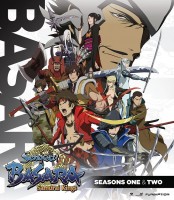 Sengoku Basara: Samurai Kings, Season 1 directed by Itsuro Kawasaki. A little to my surprise, I enjoyed the Sengoku Basara: Samurai Legends manga so much that I decided to track down more of Sengoku Basara. I still haven’t gotten around to playing any of the video games, which is where the franchise started, but I have been happily watching the Samurai Kings anime. Sengoku Basara is based on the actual historic figures and events from Japan’s Warring States period, but it is delightfully irreverent and over-the-top with its portrayals. Honestly, Sengoku Basara is ridiculous and doesn’t at all take itself too seriously, but because of that it’s also a tremendous amount of fun. I mean, it has literal battle auras, impossible feats, absurd amounts of damage, nearly indestructible warriors, epic battles, and constantly shifting alliances, not to mention a healthy dose of improbable technology and anachronisms. I get a kick out of it all, though, and find Sengoku Basara to be highly entertaining. Samurai Kings might not be a series that I’ll watch over and over again, but I’ll definitely be checking out the second season.
Sengoku Basara: Samurai Kings, Season 1 directed by Itsuro Kawasaki. A little to my surprise, I enjoyed the Sengoku Basara: Samurai Legends manga so much that I decided to track down more of Sengoku Basara. I still haven’t gotten around to playing any of the video games, which is where the franchise started, but I have been happily watching the Samurai Kings anime. Sengoku Basara is based on the actual historic figures and events from Japan’s Warring States period, but it is delightfully irreverent and over-the-top with its portrayals. Honestly, Sengoku Basara is ridiculous and doesn’t at all take itself too seriously, but because of that it’s also a tremendous amount of fun. I mean, it has literal battle auras, impossible feats, absurd amounts of damage, nearly indestructible warriors, epic battles, and constantly shifting alliances, not to mention a healthy dose of improbable technology and anachronisms. I get a kick out of it all, though, and find Sengoku Basara to be highly entertaining. Samurai Kings might not be a series that I’ll watch over and over again, but I’ll definitely be checking out the second season.
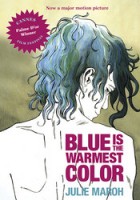

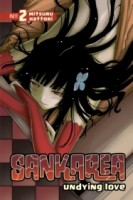
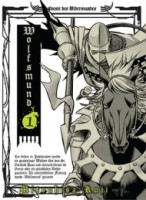
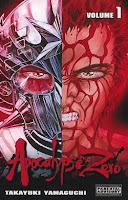





 MICHELLE: While this week’s list over at Midtown Comics does include some real contenders—Bunny Drop and Goong especially—I simply must go off list this time and pick what has to be one of the most highly anticipated (if not the most, but we are in a situation where Princess Knight is also on its way!) releases of the year:
MICHELLE: While this week’s list over at Midtown Comics does include some real contenders—Bunny Drop and Goong especially—I simply must go off list this time and pick what has to be one of the most highly anticipated (if not the most, but we are in a situation where Princess Knight is also on its way!) releases of the year:  SEAN: Yes, while I really should be trying to drive up Hayate the Combat Butler’s sales by talking about how enjoyable this current serious arc is, it’s got to be Sailor Moon this week. Or rather, I’ll talk about
SEAN: Yes, while I really should be trying to drive up Hayate the Combat Butler’s sales by talking about how enjoyable this current serious arc is, it’s got to be Sailor Moon this week. Or rather, I’ll talk about  DAVID: For whatever incomprehensible reason, neither of the Sailor debuts will be showing up at my local comic shop, which would have been enough to plant a seed of dark bitterness in my heart, were it not for the fact that I can look forward to the fourth volume of Yumi Unita’s
DAVID: For whatever incomprehensible reason, neither of the Sailor debuts will be showing up at my local comic shop, which would have been enough to plant a seed of dark bitterness in my heart, were it not for the fact that I can look forward to the fourth volume of Yumi Unita’s  KATE: Since MJ is singing the praises of Sailor Moon, I’ll bang the drum for volume 12 of
KATE: Since MJ is singing the praises of Sailor Moon, I’ll bang the drum for volume 12 of 












 MICHELLE: It is indeed a good week for Yen Press. While I have no doubt that Bunny Drop is thoroughly awesome, I am going to have to cast my vote for the fifth volume of
MICHELLE: It is indeed a good week for Yen Press. While I have no doubt that Bunny Drop is thoroughly awesome, I am going to have to cast my vote for the fifth volume of 